To read the previous part of this article, go to Babywearing Benefits for the Baby.
There are many babywearing options. I will look at different models on the market in this article.
Many are available, but they are not all ergonomic. That is why, before making your choice, make sure the baby’s position is ergonomic, respecting the natural position the baby takes in your arms. For example, for a newborn, the spinal cord should be curved and supported up to the base of their neck. Their knees should be bent in an axis that brings them higher than their bottom. Their legs should be in an “M” shape compared to their hips while respecting their natural opening.
The child’s arms should also be free to play with their hands or bring them to their mouth. You have to make sure the base is broad and extends from one knee to another. Their bottom and hips serve as support, not their crotch, a bit like when sitting on a chair.
Ergonomic baby carriers are divided into three groups:
- Wraps
This group includes woven and stretchable wraps and ring slings.
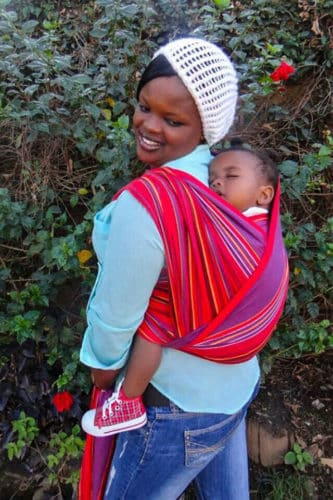
Woven wraps offer the broadest range of options. You can use many positions and dozens of different ways of tying them. The wrap consists of a rectangular piece of fabric which varies in length from 3-5 metres. It is manufactured so that the material can’t stretch in any direction. The knots provide more support, especially for infants who weigh more. The length and different possibilities sometimes scare people.
On the other hand, keep in mind that the knots can be used for a long time in different positions, making it simple to use. Babywearing with this kind of baby carrier can start at birth and last up to 45 lbs, depending on the type of weaving and fabric. You can use it for four positions: on the stomach, hip, back and facing outwards.
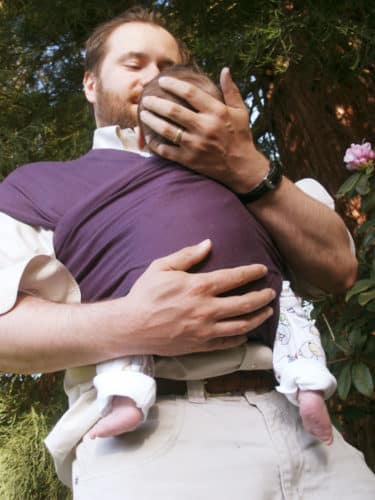 stretch wrap is also made from a rectangular piece of fabric about 5 metres in length. In this case, the fabric’s stretchiness makes all the difference. It adjusts easier. This type of baby carrier is the best starting from birth as it shapes to and supports the body’s tiny weight. On the other hand, you will need to change the baby carrier when your child reaches 15-20 lbs. The fabric’s stretchiness will make it less supportive, less comfortable for the carrier and less safe for the baby. Unless you have a hybrid wrap that allows babywearing beyond this weight.
stretch wrap is also made from a rectangular piece of fabric about 5 metres in length. In this case, the fabric’s stretchiness makes all the difference. It adjusts easier. This type of baby carrier is the best starting from birth as it shapes to and supports the body’s tiny weight. On the other hand, you will need to change the baby carrier when your child reaches 15-20 lbs. The fabric’s stretchiness will make it less supportive, less comfortable for the carrier and less safe for the baby. Unless you have a hybrid wrap that allows babywearing beyond this weight.
It’s easier to learn how to use a stretchable wrap because there are only two safe ways to knot it. Also, you shouldn’t carry your baby facing outwards with this kind of wrap, and only on the back if your wrap is a hybrid model.
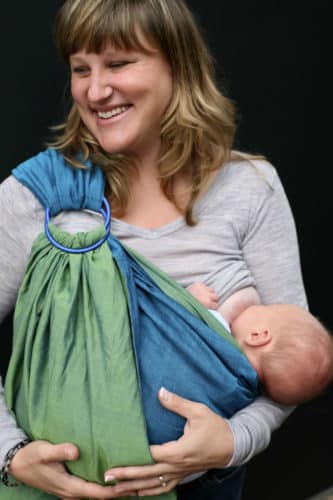
A ring sling is a 2-metre long piece of fabric with 2 rings at one end. Many styles and mixes of fabrics are available. But the fabric is never stretchable. There are variations made using lighter materials that dry faster to babywear when swimming or taking a shower. Given how it’s made, it’s easy to use and requires little time to learn how to use it. It’s also convenient for short-term babywearing, as it can be adjusted and remove quickly.
On the other hand, babywearing with this kind of baby carrier is asymmetrical, as the weight is placed on only one of the carrier’s shoulders. This is why it is less practical for longer-term babywearing. You can use the four positions (stomach, hip, back and facing outwards).
- Asian Baby Carriers
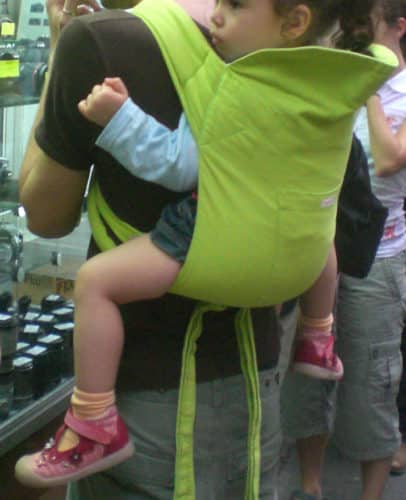
Asian baby carriers fall into three models: Mei-Tei, Onhuhimo, and Podeagi. The last two required more advanced knowledge about babywearing and are not really adapted to babywearing before 18 months, so I don’t really talk about them.
A Mei-Teil is made up of backrest with four straps. Some people think of it as a molded or preformed wrap without loops. You only need a minimal amount of tying, and given the type of fabric used, it is as enveloping and warm as a wrap. It is straightforward to use, even with a newborn. It is a convenient baby carrier for babywearing on your back or for hiking with older children. You can also use it on your hip, but never facing outwards.
- Preformed Baby Carrier
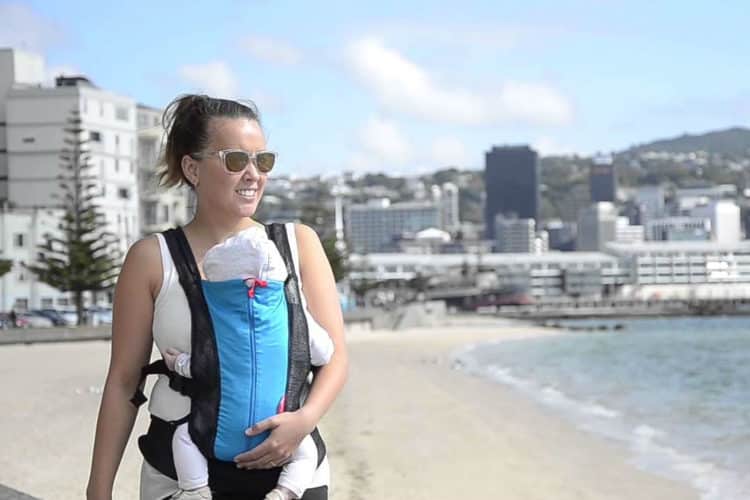
Preformed baby carriers are probably the easiest to use. Made with a waist belt, straps and a backrest, it can be installed quickly without much learning. Some models allow you to cross the straps or carry the baby facing outwards relatively ergonomically. The majority of preformed baby carriers are not made for newborns, even if many offer accessories that change the ergonomics.
To continue reading, go to How to Choose a Baby Carrier.


